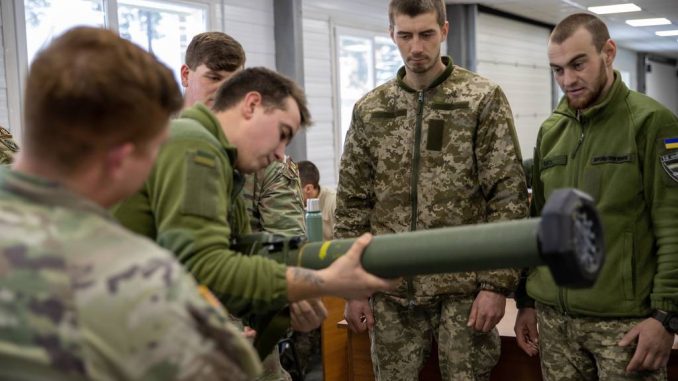
Top Army officials told House lawmakers Thursday that Russia’s invasion of Ukraine has vindicated many of their technological modernization priorities.
“Long-range precision fires are extremely important,” said Army Chief of Staff Gen. James McConville, indirectly referencing Ukraine’s ability to translate battlefield intelligence into high-impact strikes on key Russian leaders and equipment. “We’re seeing the value of that…the ability to sink ships, the ability to hit command posts.”
Ukrainian forces have killed at least 12 Russian generals since the war’s onset, and the New York Times reported that U.S. officials have provided real-time intelligence on their locations to Ukraine. The Pentagon has denied that report.
RELATED
:quality(70)/cloudfront-us-east-1.images.arcpublishing.com/mco/FCUZW7TFEZGOHMUKRJL5ZWE5ZY.jpg)
McConville also pointed to drones — both military and modified commercial off-the-shelf units — and “anti-drone capability” as key assets whose importance has been on display in the war. Many videos have emerged from both sides in the conflict that show drones coordinating fires, too.
“It’s really about speed, range and convergence — bringing all those systems together,” said McConville. “Doing combined arms as a joint force coming together would give you the capabilities that you need to be very, very effective [like] what’s happening in Ukraine.”
Army Secretary Christine Wormuth added that the service is “investing” in counter-drone technology.
Both leaders also pointed to lessons about the importance of joint training exercises that offer partner countries experience in large-scale maneuvers.
“About 75% of [Ukraine’s] brigades have been through” large-scale U.S.-led training exercises, said McConville. “The more we can do to build the capacities and capabilities of our allies and partners — or just friends — is really important.”
Beyond tech and strategy, the chief of staff noted important tactical lessons — such as Russia’s apparent failure to effectively integrate armor and infantry at the tactical level, which has left their vehicles vulnerable to portable anti-tank systems like the Javelin and NLAW.
“We have the best tanks and armored personnel carriers…but to me, it’s also how you employ them,” McConville said. He added that the Army is also working to field active protective systems on its vehicles.
“I think we’re in a much better position [than Russia],” McConville said.
Davis Winkie is a staff reporter covering the Army. He originally joined Military Times as a reporting intern in 2020. Before journalism, Davis worked as a military historian. He is also a human resources officer in the Army National Guard.


Be the first to comment